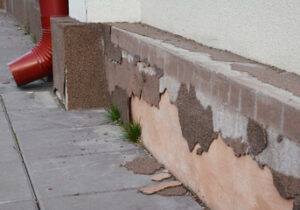Paving a driveway is a major investment that can enhance your home’s curb appeal and functionality. However, there are many considerations to make.

Some important factors include: the material, the drainage system, and safety features. Getting professional driveway paving services is essential to ensuring a long-lasting, durable, and attractive result. Visit Our Website Here to learn more.
The way your driveway looks is one of the first things potential buyers will see, and a well-designed paved surface says a lot about your home’s style and care. A new asphalt or concrete driveway not only delivers a smooth, clean appearance but can also elevate your overall curb appeal with a wide range of color and texture options. Adding a matching sidewalk offers the opportunity to create a polished, uniform look that flows throughout your hardscaping.
Regardless of your style, you can find an eye-catching option to match your home’s color scheme, whether it’s hardwearing and durable pavers or budget-friendly gravel. And, if you’re looking for an environmentally friendly option that balances functionality with visual impact, permeable paving is an excellent choice.
A new driveway can make a bold statement that instantly elevates your home’s curb appeal. And if you choose pavers, the wide variety of colors and shapes allows you to personalize your paving design, adding an element of individuality that will set your house apart from the rest.
In addition to the visual appeal of pavers, their interlocking design creates a strong and sturdy surface that can hold up against heavy loads. Several options for patterning paver driveways are available, including herringbone and basketweave. The 90-degree herringbone is a classic style that provides an elegant, traditional look while providing a stable and strong structure. The basketweave design features alternating pairs of pavers, creating a more intricate pattern that’s ideal for homeowners who want a unique style with added durability.
Another benefit of choosing a patterned paver driveway is that the joint sand helps keep them in place, even during extreme weather. This is important for preventing cracking, shifting and unevenness. In addition, the final compaction of the joint sand locks in the sand and keeps it from wearing away over time.
Pavers can be used to define lawn edges, highlight architectural features of the home or garden, draw attention to a focal point, and guide the eye toward the front door. In fact, a well-designed paver driveway can elevate your whole home’s curb appeal and increase property value.
Durability
When it comes to residential driveway paving, there are several important factors to consider. Durability, maintenance requirements, and aesthetic preferences are all important considerations when choosing the best paving material for your driveway. Popular options include asphalt, concrete, gravel, and interlocking pavers. Each has its own advantages and disadvantages. To ensure long-term durability and a high-quality finish, it’s critical to hire a professional for installation. Proper site preparation, grading, and ground stabilization can prevent future problems such as sinking or cracking.
Asphalt driveways are an affordable option that provides a durable surface for vehicle traffic. However, they are susceptible to cracking from freeze-thaw cycles and heavy loads. In addition, they require regular sealing to maintain their appearance and durability. Concrete is a more expensive option that offers superior durability, but it can also crack or become brittle over time. It requires periodic resurfacing, and it isn’t as flexible as asphalt or gravel.
Brick pavers are an excellent choice for homeowners looking for a traditional style that is both stylish and durable. They are available in a variety of colors and sizes, and they can be combined to create unique patterns. Concrete pavers are an excellent choice for heavy-duty applications, and they can withstand the weight of vehicles and extreme weather conditions.
Interlocking pavers offer a versatile and attractive option for driveways. They can be used in a wide variety of design styles, and they are available in both clay and concrete varieties. Interlocking pavers are easy to clean and maintain, and they resist moisture, stains, and fading.
In order to guarantee the long-term durability of your paved driveway, it’s important to choose a quality product and to hire a skilled contractor. A qualified paving expert can evaluate the current condition of your driveway and recommend the most effective surfacing material for your needs. It’s also essential to have the proper drainage system in place to avoid flooding and erosion issues. Finally, it’s crucial to repair cracks in a timely manner to avoid further damage.
Water Resistance
Asphalt, a familiar and reliable choice for driveway paving, is able to withstand heavy traffic while providing an attractive and durable surface. It can be sealed to improve its appearance and extend its lifespan, but it will need to be done every three to five years. The material is also relatively low-cost, making it a popular option for budget-minded homeowners.
Concrete is another sturdy, versatile option for paving a driveway. It can be molded into various shapes to create unique visual effects, and it’s available in many different colors. It’s a great choice for homes with coastal exposure, as it can resist the corrosive effects of sea salt. Concrete is also an eco-friendly choice, as it can be made with recycled materials.
The downside of concrete is its vulnerability to damage from water. It absorbs and holds moisture, causing it to expand and crack over time. To prevent this from happening, it’s important to make sure the concrete is properly prepared and installed. This includes ensuring the subgrade is free of any rocks or other debris. In addition, the slope and crown of the concrete should be inspected and adjusted to ensure proper drainage.
Clay bricks are another popular option for driveway paving. They stand up to heavy use and harsh weather well, but they can be expensive. They are often used in combination with other materials, including asphalt, to create a more cost-effective and appealing surface.
Gravel is a common option for rural driveways because it’s low-cost and easy to maintain. Its main disadvantage is that it can be unsightly if it’s not properly graded and compacted. It’s also prone to rutting and deterioration.
Paving stones are a more expensive choice for your driveway, but they offer several advantages. They are long-lasting and require very little maintenance, making them a good value for money. They are also aesthetically pleasing, and the different designs and textures can add a touch of elegance to any home. They’re also slip-resistant, which is particularly important for areas prone to frequent rain. The texture of the stone contributes to this, so it’s a good idea to choose a tumbled or cobbled finish to maximize safety and beauty.
Maintenance
As your driveway takes on the brunt of your vehicle’s weight and the harsh effects of weather, it is important to keep up with maintenance and repair. A good paving contractor can help you assess your needs and determine a budget for your paving project.
A paver or cobblestone driveway is an investment that requires care to ensure it lasts. A few simple steps can help your driveway stand the test of time and retain its beauty.
Paver and cobblestone driveways require a little more maintenance than other paving materials but they hold up to heavy loads and resist the elements quite well. These aesthetically appealing options are a popular choice because they add curb appeal to your home and increase its value. However, improper installation or lack of maintenance can lead to a deteriorating surface that impacts both your property and its functionality.
Block paving can be prone to the build-up of oil and petrol deposits that can cause your driveway to look dull and discoloured. The best thing to do in this situation is to brush it off with a soft brush and use a citric acid-based cleaner that will break down the oils without damaging your paving blocks. Never use a pressure washer on your paved area as the force of this tool can damage your paving.
Concrete paving is extremely durable and versatile. It is available in a range of colours, textures and finishes, which can enhance the aesthetics of your property. However, the downside of this material is that it can be prone to cracking, sinking and drainage issues. These problems can be addressed with specialized concrete repair services and regular maintenance.
Hairline cracks are normal but when they begin to enlarge, it is likely time for a new driveway paving project. When cracks become potholes, they are not only unsightly but they also create tripping hazards and allow water to seep into the base layer. If this issue is left untreated, it can eventually cause significant damage to the foundation of your property and even the basement.








